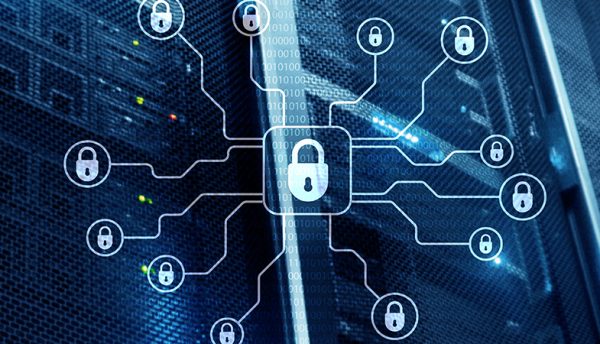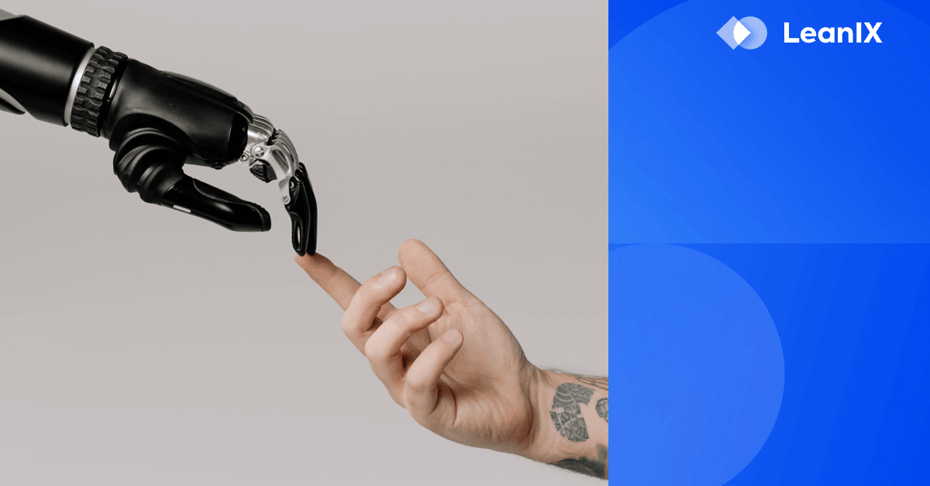Championing privacy-first security: Harmonizing privacy and security compliance

When security solutions are crafted with privacy as a central consideration,
organisations can deploy robust security measures while safeguarding the
personal data of their customers and employees. A comprehensive cost-benefit
analysis reveals significant advantages in adopting a privacy-first approach to
security. For instance, proactively blocking malware before it infiltrates an
organisation’s systems can avert a potential data breach. Given the average cost
of US$4.45 million in 2023, coupled with the consequential impact on brand
reputation and legal ramifications, preventing even a single data breach becomes
paramount for any company. Hence, the importance of industry-leading security
measures is indisputable. Any reputable security company should provide
solutions that limit its access to sensitive data and ensure the protection of
the personal data entrusted to its care. ... A privacy-first security program
assesses the risks associated with both implementing and not implementing
security measures. If the advantages of deploying a security solution, such as
email scanning, outweigh the drawbacks – which is highly probable – the
organisation should proceed with the careful implementation of this capability.
Far Memory Unleashed: What Is Far Memory?
Far memory is a memory tier between DRAM and Flash that has a lower cost per
GB than DRAM and a higher performance than Flash. Far memory works by
disaggregating memory and allowing nodes or machines to access the memory of a
remote node/machine via compute express link. Memory is the most contested and
least elastic resource in a data center. Currently, servers can only use local
memory, which may be scarce on the local system but abundant on other
underutilized servers. With far memory, local machines can use remote
machine’s memory. By introducing far memory into the memory tier and moving
less frequently accessed data to far memory, the system can perform
efficiently with low DRAM and reduce the total cost of ownership. Far memory
uses a remote machine’s memory as a swap device, either by using idle machines
or by building memory appliances that only serve to provide a pool of memory
shared by many servers. This approach optimizes memory usage and reduces
over-provisioning. However, far memory also has its own challenges. Swapping
out memory pages to remote machines increases the failure domain of each
machine, which can lead to a catastrophic failure of the entire cluster.
Four reasons your agency's security infrastructure isn't agile enough

There are four key considerations for integrating security architecture
effectively in an agile environment - Cross-Functional Collaboration: Security
experts must actively engage with developers, testers, and product owners.
Collaborating with experts helps create a shared understanding of security
requirements and facilitates quick resolution of security-related issues.
Embedding security professionals within Agile teams can enhance real-time
collaboration and ensure consistent security controls. Security Training
and Awareness: Given the rapid pace of an Agile sprint, all team members
should be equipped with the knowledge to write secure code. ... Foster a
Security Culture: Foster a culture where security is seen as everyone's
responsibility, not just the security team's. Adapt the organizational mindset
to value security equally with other business objectives. ... Security
Champions within Agile Teams: Identify and nurture 'Security Champions' within
each Agile team. These individuals with a keen interest in security act as a
bridge between the security team and their respective agile teams. They help
promote security best practices, ensuring security is not overlooked amidst
other technical considerations.
AI Legislation: Enterprise Architecture Guide to Compliance

Artificial intelligence (AI) tools are so easy to leverage that they can be
used by anyone within your organization without technical support. This means
that you need to keep a careful eye on, not just the authorized applications
you leverage, but what AI tools your colleagues could be using without
authorization. In leveraging AI tools to generate content for your
organization, your employees could unwittingly input private data into the
public instance of ChatGPT. Not only does this share that data with ChatGPT's
vendor, OpenAI, but it actually trains ChatGPT on that content, meaning the AI
tool could potentially output that information to another user outside of your
organization. Alternatively, overuse of generative AI tools without proper
supervision could lead to factual or textual errors being published to your
customers. Gen AI tools need careful supervision to ensure they don't
"hallucinate" or produce mistakes, as they are unable to self-edit. It's
equally important to be able to report back to legislators on what AI is being
used across your company, so they can see you're compliant. This will likely
become a regulatory requirement in the near future.
Choosing a disaster recovery site

The first option is to set up your own secondary DR data center in a different
location from your primary site. Many large enterprises go this route; they
build out DR infrastructure that mirrors what they have in production so that,
at least in theory, it can take over instantly. The appeal here lies in
control. Since you own and operate the hardware, you dictate compatibility,
capacity, security controls and every other aspect. You’re not relying on any
third party. The downside of course, lies in cost. All of that redundant
infrastructure sitting idle doesn’t come cheap. ... The second approach is to
engage an external DR service provider to furnish and manage a recovery site
on your behalf. Companies like SunGard built their business around this model.
The appeal lies in offloading responsibility. Rather than build out your own
infrastructure, you essentially reserve DR data center capacity with the
provider. ... The third option for housing your DR infrastructure is
leveraging the public cloud. Market leaders like AWS and Azure offer seemingly
limitless capacity that can scale to meet even huge demands when disaster
strikes.
How CISOs navigate policies and access across enterprises
Simply speaking, if existing network controls are now being moved to the
cloud, the scope of technical controls does not drastically differ from legacy
approaches. The technology, however, has massively evolved towards
platform-centric controls, and that for a good reason. Isolated controls cause
complexity, and if you are moving your perimeter to a hyperscaler, both your
users and their devices will no longer be managed by the corporate on-prem
security controls either. A good CASB to broker between user and data is key,
as is identity and access management. What’s now new is workload protection
requirements á la CSAP technology. In addition to increasing sophistication
and the number of security threats and successful breaches, most enterprises
further increase risk by “rouge IT” teams leveraging cloud environments
without the awareness and management by security teams. Cloud deployments are
typically deployed faster and with less planning and oversight than data
center or on-site environment deployments. Cloud security tools should be
an extension of your other premise-based tools for ease of management,
consistency of policy enforcement and cost savings due to additional purchase
commitments, training, and certification non-duplicity.
What to Know About Machine Customers

In the realm of customer service and support, machine customers are like
virtual assistants or smart devices (think of Siri or Alexa) that carry out
customer service tasks on behalf of actual human customers. Alok Kulkarni, CEO
and Co-founder of Cyara, says the emergence of machine customers introduces a
new dynamic, requiring organizations to adapt their existing support
strategies. “This might include developing specific interfaces and
communication channels tailored for interactions with machine customers,” he
explains in an email interview. Organizations must create additional
self-service options specifically designed for machine customers. “Unlike
traditional customer support approaches, catering to machine customers
requires a nuanced understanding of their specific needs and operational
dynamics,” Kulkarni explains. This means designing self-service interfaces
that are not only user-friendly for machines but also align with the
intricacies of autonomous negotiation and purchasing processes. These
interfaces should empower machine customers to navigate through various stages
of transactions autonomously, from product selection to payment processing,
ensuring a streamlined and frictionless experience.
Google: Govs Drive Sharp Growth of Commercial Spyware Cos

Much of the concern has to do with the explosion in the availability of tools
and services that allow governments and law enforcement to break into target
devices with impunity, harvest information from them, and spy unchecked on
victims. The vendors selling these tools — most of which are designed for
mobile devices — have often openly pitched their wares as legitimate tools
that aid in law enforcement and counter-terrorism efforts. But the reality is
that repressive governments have routinely used spyware tools against
journalists, activists, dissidents, and opposition party politicians, said
Google. The company's report cites three instances of such misuse: one that
targeted a human rights defender working with a Mexico-based rights
organization; another against an exiled Russian journalist; and the third
against the co-founder and director of a Salvadorian investigative news
outlet. The researcher attributes much of the recent growth in the CSV market
to strong demand from governments around the world to outsource their need for
spyware tools rather than have an advanced persistent threat build them
in-house.
How To Build Autonomous Agents – The End-Goal for Generative AI

From a technology perspective, there are five elements that go into autonomous
agent designs: the agent itself, for processing; tools, for interaction;
prompt recipes, for prompting and planning; memory and context, for training
and storing data; and APIs / user interfaces, for interaction. The agent at
the center of this infrastructure leverages one or more LLMs and the
integrations with other services. You can build this integration framework
yourself, or you can bring in one of the existing orchestration frameworks
that have been created, such as LangChain or LlamaIndex. The framework should
provide the low-level foundational model APIs that your service will support.
It connects your agent to the resources that you will use as part of your
overall agent, including everything from existing databases and external APIs,
to other elements over time. It also has to take into account what use cases
you intend to deliver with your agent, from chatbots to more complex
autonomous tasks. Existing orchestration frameworks can take care of a lot of
the heavy lifting involved in managing LLMs, which makes it much easier and
faster to build applications or services that use GenAI.
How Platform and Site Reliability Engineering Are Evolving DevOps
Actually, failure should not just be OK but welcome. Most organizations are
averse to failure, but it’s only through our failures in these spaces that we
can learn and grow and figure out how to best position, leverage, and continue
to imagine the roles of DevOps, platform engineers, and SRE. I’ve seen this
play out in large companies that went all in on DevOps and then realized that
they needed a team focused on breaking down any barriers that presented
themselves to developers. At scale, DevOps - even with the tools provided by
the internally focused platform engineering team - didn’t really cut it. These
companies then integrated the SRE function, which filled DevOps’ reliability
and scalability gaps. That worked until these companies realized that they
were reinventing the wheel - dozens of times. Different engineering teams
within the organization were doing things just differently enough - different
setups, different processes, different expectations - that they needed
separate setups to put out a service. The SREs were seeing all of this after
the fact, which led them to circle back to the realization that different
teams needed to be using the same development building blocks. Frustrating?
Yes. The cost of increasing efficiency in the future? Absolutely.
Quote for the day:
“It’s better to look ahead and
prepare, than to look back and regret.” -- Jackie Joyner-Kersee
No comments:
Post a Comment